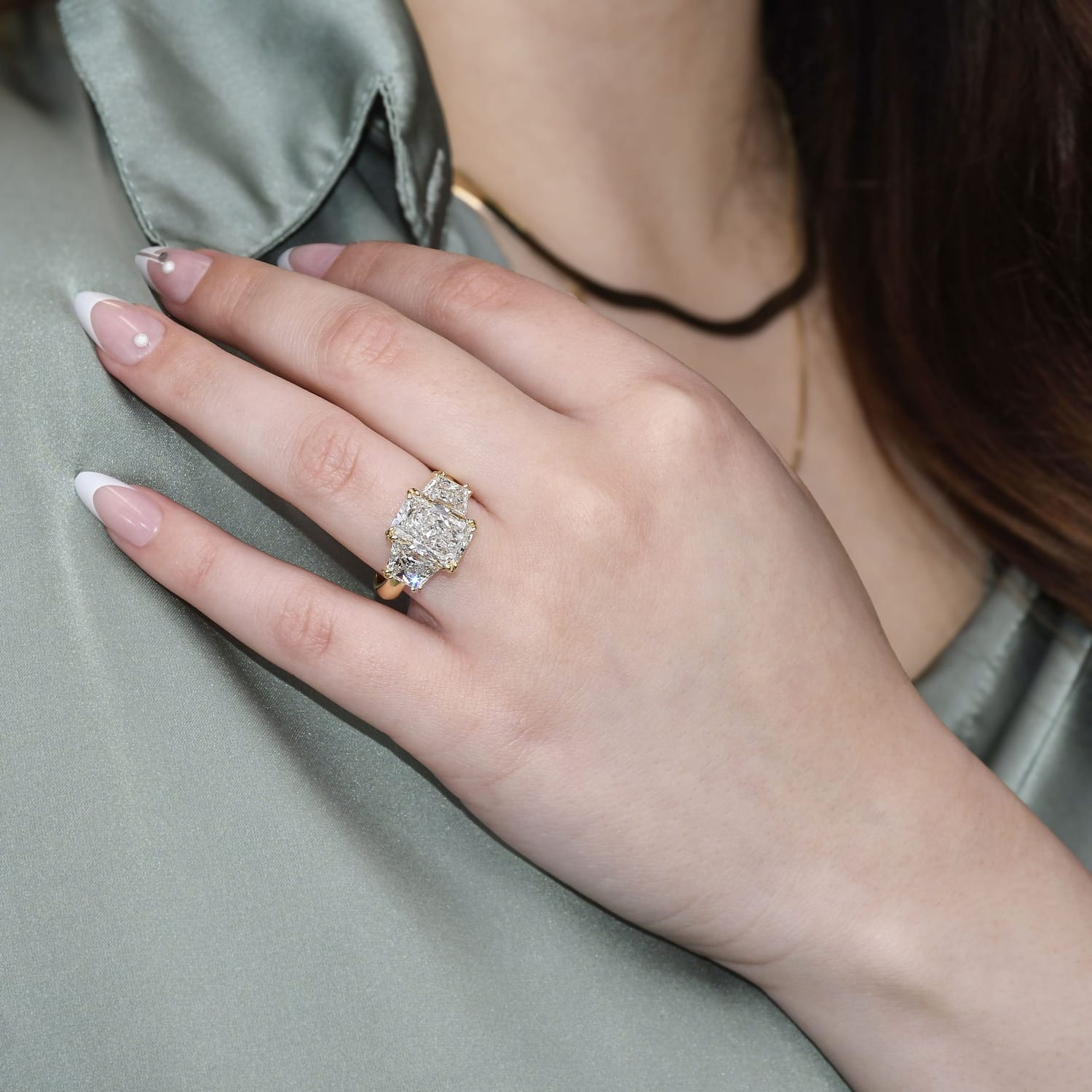Gemstone Education: Emeralds - Introduction

Introduction to Emeralds
Emeralds, known for their rich green to bluish-green hues, are the green variety of beryl, a mineral species that includes aquamarine and other colored beryls. These gems have captivated civilizations throughout history with their lush color and luminous presence.
Defining Emeralds
Color Classification: Emerald's defining feature is its green color, which must be sufficiently dark and saturated to meet the traditional definitions used by gemologists and gemological laboratories. The presence of chromium and sometimes vanadium contributes to the green color, distinguishing true emeralds from lighter green beryls, which may not qualify as emeralds but rather as green beryl depending on their color intensity.

Emerald History and Lore

Historical Significance: Emeralds have been cherished since antiquity, originally mined in Egypt as early as 330 BC and famously adored by Cleopatra. The gem’s name, derived from the ancient Greek word "smaragdus," meaning green, hints at its historical importance.
Cultural Associations: The deep green of emeralds is synonymous with the most lush landscapes and has been associated with royalty and spirituality. Regions such as Ireland and cities like Seattle are nicknamed with references to this gemstone’s vibrant hue. The Emerald Buddha, a sacred religious icon in Thailand, though made of jadeite, reflects the esteemed status of emerald green in various cultures.
Legendary Attributes

Emeralds are surrounded by a wealth of myths and legends. It was believed that placing an emerald under one's tongue could enable them to foresee the future and reveal truths. Emeralds were also thought to protect against evil spells and cure diseases such as cholera and malaria. Historically, wearing an emerald was supposed to expose the truth or falseness of a lover's oath and enhance one's eloquence.
Divine and Royal Lore: According to legend, emeralds were one of the four precious stones given by God to King Solomon, granting him power over all creation. This deep connection to divine and royal power highlights the stone’s significance throughout human history.
Emerald Treatments: Enhancing Clarity and Appearance
Emeralds, like many gemstones, are often treated to enhance their clarity and appearance. Due to their natural formation, many emeralds contain surface-reaching fractures that can detract from their beauty. To improve their appearance, these fractures are often filled with various substances. Understanding these treatments is crucial for both consumers and professionals in the gemstone industry.
1. Types of Treatments
- Fracture Filling: The most common practice in emerald treatments involves filling surface-reaching fractures with substances such as:
- Oils and Waxes: Traditional fillers like cedar oil are used because they have a similar refractive index to emerald, which makes the fractures less visible.
- Artificial Resins and Polymers: Modern treatments use epoxy prepolymers and other polymers, including UV-setting adhesives. These materials also help to improve the clarity by making the fractures less noticeable.
- The durability of the filler material is a crucial consideration. While some substances like certain glasses and resins are more durable, they are susceptible to deterioration from exposure to heat, chemicals, or even changes in air pressure.
3. Detectability and Care
- Detectability: A trained gemologist can usually identify filled fractures in emeralds using standard gemological tools. This identification is important for proper valuation and care.
- Special Care Requirements: Due to the nature of the fillers, treated emeralds require special care. They should be protected from exposure to heat, which can cause the filler to degrade or even come out of the fractures. Similarly, exposure to harsh chemicals and extreme changes in air pressure should be avoided to maintain the integrity of the treatment.
4. Encountered in the Trade
- Emeralds are not the only gemstones that undergo fracture filling; diamonds, rubies, and sapphires are also commonly treated in similar ways. However, the prevalence and type of filler used can vary significantly between different types of gemstones.
5. Ethical Considerations and Disclosure
- It is considered ethical practice within the gemstone industry to disclose any treatments that a gemstone has undergone. Transparency regarding treatments not only ensures consumer trust but also helps in maintaining the gemstone's value and ensuring proper care.

Emeralds Today
Modern Day Gemstone: Today, emeralds continue to be a popular choice for jewelry, particularly as the birthstone for May and for significant anniversaries like the 20th and 35th. Their color symbolizes renewal and growth, making them a fitting gift for spring celebrations and milestones in personal growth and relationships.



